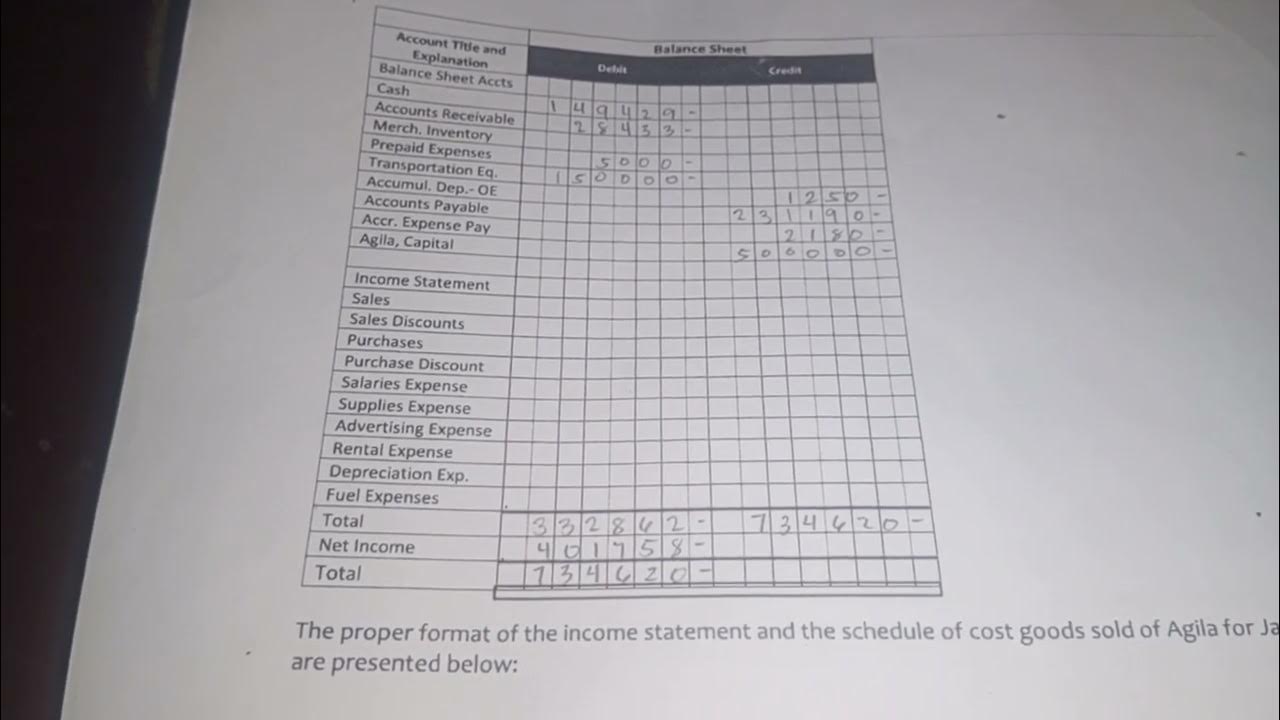DASAR AKUNTANSI : Buku Besar
Summary
TLDRThis video provides a detailed explanation of how to organize and record journal entries into the general ledger (buku besar) in accounting. It walks viewers through the process of grouping transactions by account type (e.g., cash, capital) using different ledger formats, such as T-form, Skontro Berlajur, and Stafel. The video emphasizes the importance of accurately transferring debit and credit entries from the journal into the ledger and calculating the final balances. It concludes by encouraging practice and understanding the role of the general ledger in the overall accounting cycle.
Takeaways
- 😀 The video introduces the concept of general journals in accounting, which is the first step in the accounting cycle.
- 😀 The next step after general journals is the transfer of transactions to the general ledger (buku besar), which organizes them by account type.
- 😀 The purpose of the general ledger is to group account balances by their respective accounts, making financial tracking easier.
- 😀 There are different types of general ledger formats, including the Skontro, T, and Stafel formats, which all help in organizing transaction data.
- 😀 The T-format ledger is highlighted as the easiest to use for posting transactions, as it clearly indicates whether an amount is debited or credited.
- 😀 The process of transferring transactions from the general journal to the ledger includes identifying whether the amounts are debited or credited, based on their positions in the journal.
- 😀 The video emphasizes the importance of correctly transferring each transaction's amount and maintaining the appropriate debit or credit position in the general ledger.
- 😀 The final step for each ledger account is totaling the debits and credits to determine the account's balance for the period.
- 😀 In the case of the cash account, it is important to ensure that the debit balance exceeds the credit balance, as cash has a normal debit balance.
- 😀 The video also provides an example of the capital account (modal), showing how it is posted in the general ledger, noting that it has a normal credit balance.
- 😀 Overall, the key takeaway is that the general ledger is a vital tool in the accounting cycle, helping to organize and summarize financial transactions by account.
Q & A
What is the purpose of the general journal in the accounting cycle?
-The general journal is used to record all transactions that happen in a business, which serves as the initial entry point for transactions before they are grouped into the ledger accounts.
What is the role of the ledger in the accounting cycle?
-The ledger is used to classify and group the transactions from the journal into specific accounts. This process allows accountants to easily track the balances of different accounts.
What is the first step in the process of transferring journal entries to the ledger?
-The first step is to analyze each transaction recorded in the general journal and identify the corresponding accounts involved. The values from the journal are then posted to the ledger accounts.
What are the different formats of ledgers mentioned in the video?
-The video mentions several ledger formats: 'skontro berlajur', 'T-form', and 'stafel'. Each format offers different ways of organizing the debit and credit entries.
What is the advantage of using the 'T-form' ledger?
-The 'T-form' ledger is considered easier to use because it provides a clear distinction between debit and credit entries, simplifying the process of tracking account balances.
Why is it important to group transactions based on accounts in the ledger?
-Grouping transactions by accounts helps to consolidate all related financial activities in one place, making it easier to prepare financial reports and track the overall financial health of the business.
What should you do if a cash transaction is recorded as a debit in the general journal?
-If a cash transaction is recorded as a debit in the general journal, the corresponding entry should also be recorded as a debit in the cash ledger account.
What happens after transferring all the transactions from the journal to the ledger?
-Once all transactions are transferred, the next step is to total the debits and credits in the ledger, ensuring that the balance between them is accurate. Any discrepancies are corrected before moving on to the next stage of the accounting cycle.
What is the significance of a normal balance in an account?
-A normal balance refers to the side (debit or credit) where the balance of an account should typically appear. For example, assets usually have a debit balance, and liabilities and equity have a credit balance.
How is the balance from the ledger transferred to the balance sheet?
-After all transactions are processed in the ledger, the final balances are transferred to the balance sheet to provide a snapshot of the business’s financial position at a specific point in time.
Outlines

Esta sección está disponible solo para usuarios con suscripción. Por favor, mejora tu plan para acceder a esta parte.
Mejorar ahoraMindmap

Esta sección está disponible solo para usuarios con suscripción. Por favor, mejora tu plan para acceder a esta parte.
Mejorar ahoraKeywords

Esta sección está disponible solo para usuarios con suscripción. Por favor, mejora tu plan para acceder a esta parte.
Mejorar ahoraHighlights

Esta sección está disponible solo para usuarios con suscripción. Por favor, mejora tu plan para acceder a esta parte.
Mejorar ahoraTranscripts

Esta sección está disponible solo para usuarios con suscripción. Por favor, mejora tu plan para acceder a esta parte.
Mejorar ahora5.0 / 5 (0 votes)






